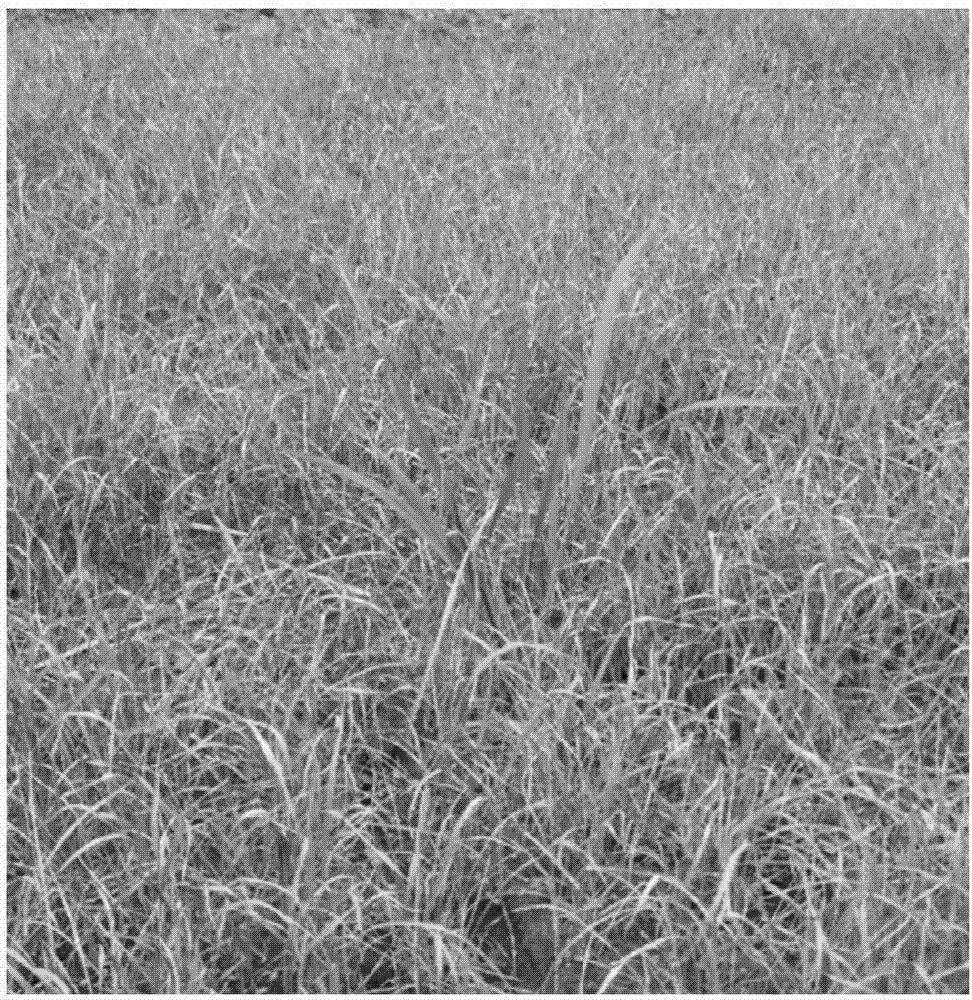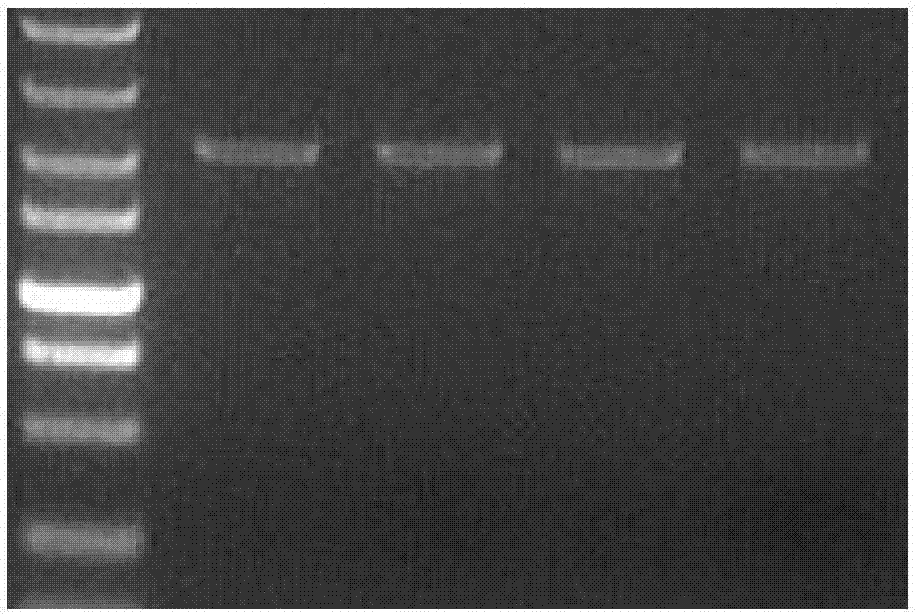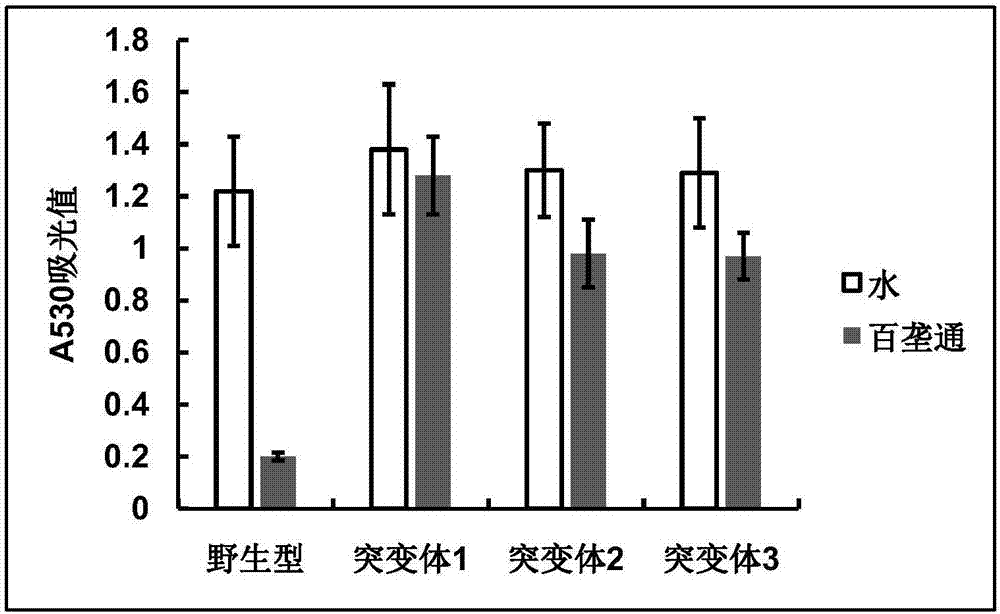Paddy rice ALS (Acetolactate Synthase) mutant protein for endowing plants with resistance to herbicides, gene and application thereof
A herbicide and mutant technology, applied in the field of plant protein and plant herbicide resistance, can solve the problems that it is difficult to predict the herbicide resistance of ALS protein in advance, and the mechanism of herbicide action is not determined.
- Summary
- Abstract
- Description
- Claims
- Application Information
AI Technical Summary
Problems solved by technology
Method used
Image
Examples
Embodiment 1
[0040] Example 1: The process of obtaining rice mutants resistant to imidazolinone herbicides (Bailongtong)
[0041] 150 kg of indica conventional rice seed Yangzhou restorer line (purchased from Jiangsu Provincial Agricultural Germplasm Resources Protection and Utilization Platform) (this is M0, soaked in water for 2 hours) was divided into 6 times with 0.5-1.0% (w / w) methanesulfonic acid Soak in ethyl acetate (EMS) at room temperature for 6-9 hours, shake the seeds every 1 hour during this period; discard the EMS solution, soak the seeds 5 times with tap water, 5 minutes each time, then rinse the seeds with tap water overnight, and carry out field work the next day Sow seeds and perform conventional fertilizer and water management (this is M1). After the plants are mature, the seeds are mixed, dried, and stored for the winter. Sow in the field the following year. When the rice (this is M2) seedlings grow to the 3-4 leaf stage, spray 3mL Bailongtong / L water ("Bailongtong" i...
Embodiment 2
[0042] Example 2: Analysis of mutation sites in rice mutants resistant to imidazolinone herbicides
[0043] From the herbicide-resistant mutant rice plants obtained in Example 1 above, a plurality of mutant leaves were selected, and genomic DNA was extracted respectively, and sent to Nanjing Yidao Biotechnology Co., Ltd. for genome sequencing. Comparing the sequencing results with the wild-type ALS gene of the Yangzhou restorer line, it was found that there were three groups of mutant plants in the above-mentioned mutant rice plants, namely, herbicide-resistant rice mutant 1, herbicide-resistant rice mutant 2 and herbicide-resistant rice mutant 3, among which, The herbicide-resistant rice mutant 1 has 2 mutations on the ALS gene, the 1880th and 1883th bases are mutated, respectively changing from G to A, and G to A, resulting in the corresponding encoded amino acid sequence The 627th and 628th positions of the ALS gene are changed from serine to asparagine, and glycine to glut...
Embodiment 3
[0046] Embodiment 3: ALS gene cloning of rice mutant resistant to imidazolinone herbicides
[0047] The leaves of the above herbicide-resistant rice mutant 1, herbicide-resistant rice mutant 2 and herbicide-resistant rice mutant 3 were taken, and genomic DNA was extracted respectively. The specific primers for amplifying the full-length ALS gene were designed according to the wild-type ALS gene sequence of Yangzhou restorer line: forward primer F5'-TCGCCCAAACCCAGAAACCC-3', reverse primer R 5'-CTCTTTATGGGTCATTCAGGTC-3'.
[0048] Adopt Takara PrimerSTAR Max DNA Polymerase polymerase (purchased from Takara company) to amplify ALS gene, its reaction system is as follows:
[0049]
[0050] The PCR amplification reaction program adopts a two-step method, annealing and extension are combined together, and 68 degrees are used.
[0051] The program is as follows: pre-denaturation: 98°C for 3min; 35 cycles: denaturation at 98°C for 10sec; extension at 68°C for 1min; incubation: 72°C...
PUM
 Login to View More
Login to View More Abstract
Description
Claims
Application Information
 Login to View More
Login to View More - R&D
- Intellectual Property
- Life Sciences
- Materials
- Tech Scout
- Unparalleled Data Quality
- Higher Quality Content
- 60% Fewer Hallucinations
Browse by: Latest US Patents, China's latest patents, Technical Efficacy Thesaurus, Application Domain, Technology Topic, Popular Technical Reports.
© 2025 PatSnap. All rights reserved.Legal|Privacy policy|Modern Slavery Act Transparency Statement|Sitemap|About US| Contact US: help@patsnap.com



